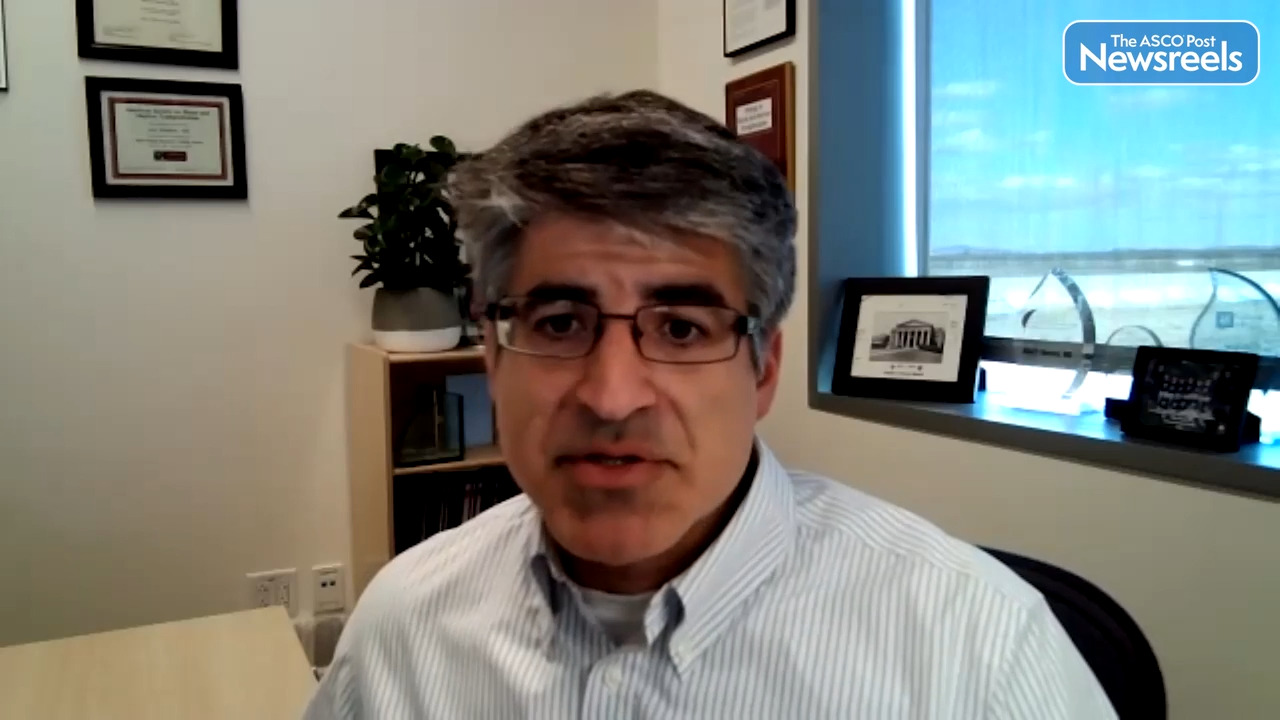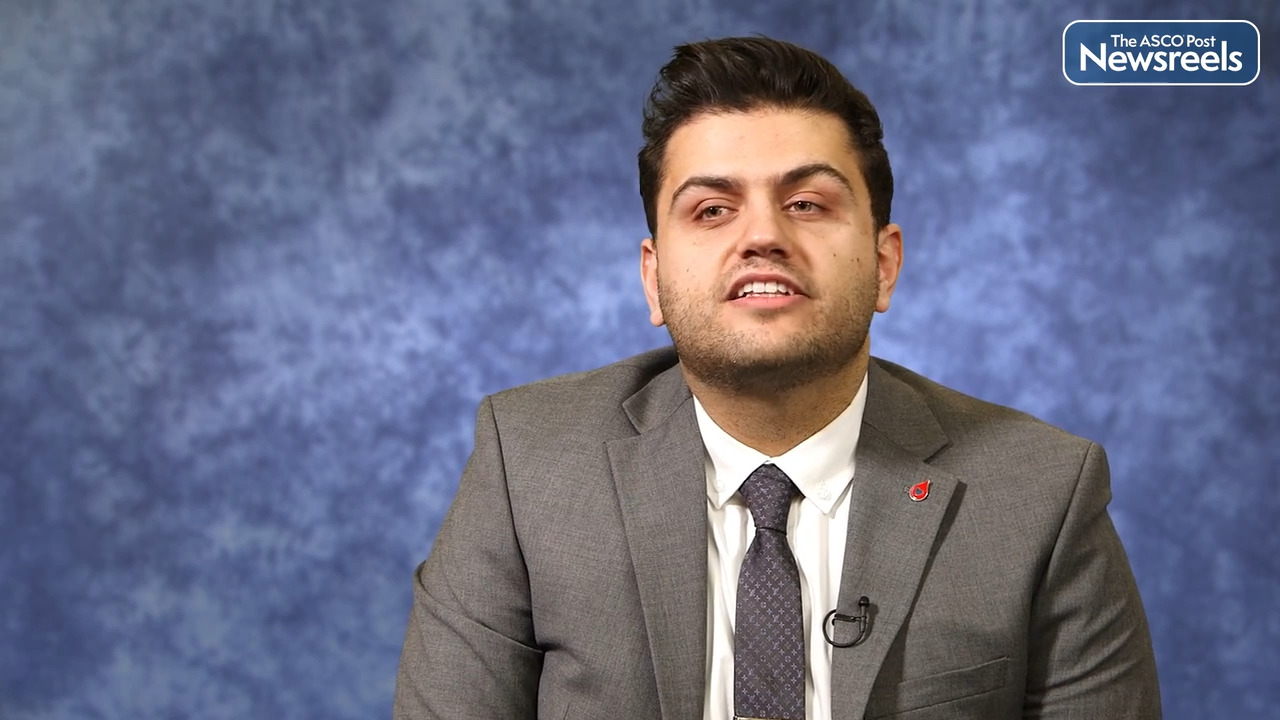Eunice S. Wang, MD, on AML: Gemtuzumab Ozogamicin Plus Standard Induction Chemotherapy Improves Outcomes
2022 ASH Annual Meeting and Exposition
Eunice S. Wang, MD, of Roswell Park Comprehensive Cancer Center, discusses the outcomes of patients newly diagnosed with acute myeloid leukemia (AML) who were treated with cytarabine plus daunorubicin plus gemtuzumab ozogamicin (GO). These patients experienced higher rates of measurable residual disease–negative complete remission and complete remission with incomplete count recovery, compared to those treated with cytarabine plus idarubicin daunorubicin alone. Although adding GO was not associated with improved overall survival, longer follow-up is warranted to determine an absolute survival advantage of this regimen (Abstract 58).
The ASCO Post Staff
Jia Ruan, MD, PhD, of Meyer Cancer Center, Weill Cornell Medicine, and NewYork-Presbyterian Hospital, discusses trial results demonstrating that the triple chemotherapy-free combination of acalabrutinib, lenalidomide, and rituximab is well tolerated, highly effective, and produces high rates of minimal residual disease (MRD)-negative complete response as an initial treatment for patients with mantle cell lymphoma, including those with TP53 mutations. Real-time MRD analysis may enable treatment de-escalation during maintenance to minimize toxicity, which warrants further evaluation. An expansion cohort of acalabrutinib/lenalidomide/obinutuzumab is being launched (Abstract 73).
The ASCO Post Staff
Julie Côté, MD, of CHU de Québec–Université Laval, discusses findings from the Canadian Myeloma Research Group database, which showed that integrating bortezomib and lenalidomide into the autologous stem cell transplant (ASCT) sequence produces a median overall survival rate ≥ 10 years in most patients with newly diagnosed multiple myeloma. These observations highlight the contribution of post-ASCT maintenance, particularly lenalidomide given until disease progression, when used in multiple patient groups including those with and without high risk, as well as those requiring a second induction regimen (Abstract 117).
The ASCO Post Staff
Alex F. Herrera, MD, of the City of Hope National Medical Center, discusses results from the POLARIX study, which showed that circulating tumor DNA (ctDNA) analysis has prognostic value for patients with previously untreated diffuse large B-cell lymphoma. Patients who did not achieve 2.5 or greater log-fold change and/or did not have ctDNA clearance following one cycle of polatuzumab vedotin along with rituximab, cyclophosphamide, doxorubicin, and prednisone had inferior outcomes than those who did. Early changes in ctDNA levels may be of use in risk-adapted trial designs to identify patients in need of alternative treatment. (Abstract 542).
The ASCO Post Staff
Abdul Rahman Al Armashi, MD, of Seidman Cancer Center, Case Western University, University Hospitals Cleveland Medical Center, discusses a retrospective analysis, using a CDC database, in one of the largest subgroup-based racial population studies analyzing mortality trends in patients with acute myeloid leukemia (AML). Between 2000 and 2019, AML mortality was the highest in Whites and the lowest in American Indians or Alaska Natives. The highest rate of increase in mortality was seen in Asians or Pacific Islanders. Dr. Al Armashi talks about the many variables that might contribute to these inequalities (Abstract 600).
The ASCO Post Staff
Anand P. Jillella, MD, of Georgia Cancer Center at Augusta University, discusses results from the ECOG-ACRIN EA9131 Trial, which showed that using a simplified treatment algorithm and management recommendations made by a group of specialists, resulted in a dramatic improvement in 1-year survival of patients with acute promyelocytic leukemia (Abstract 421).





